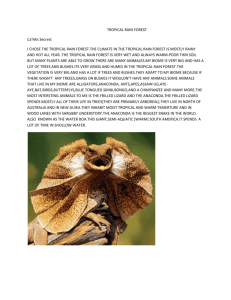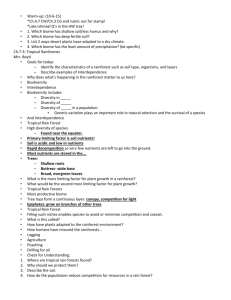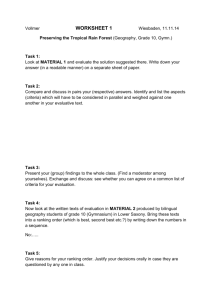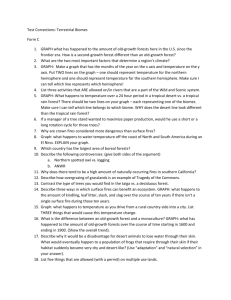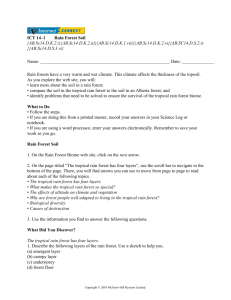Tropical Rain Forest Biome
advertisement
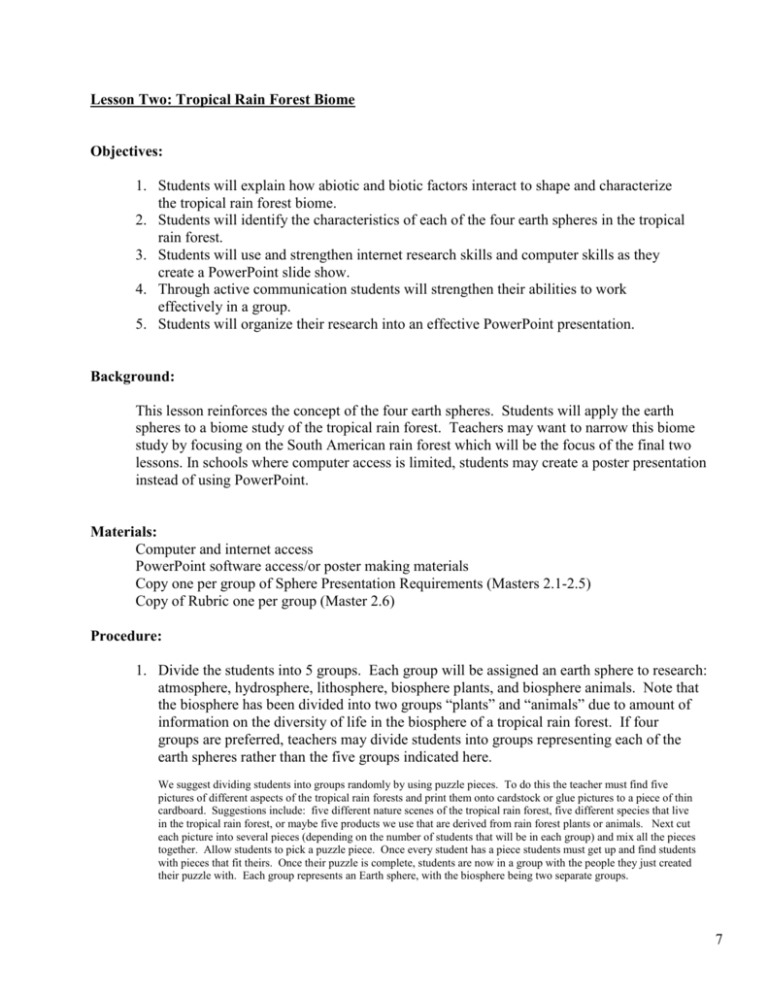
Lesson Two: Tropical Rain Forest Biome Objectives: 1. Students will explain how abiotic and biotic factors interact to shape and characterize the tropical rain forest biome. 2. Students will identify the characteristics of each of the four earth spheres in the tropical rain forest. 3. Students will use and strengthen internet research skills and computer skills as they create a PowerPoint slide show. 4. Through active communication students will strengthen their abilities to work effectively in a group. 5. Students will organize their research into an effective PowerPoint presentation. Background: This lesson reinforces the concept of the four earth spheres. Students will apply the earth spheres to a biome study of the tropical rain forest. Teachers may want to narrow this biome study by focusing on the South American rain forest which will be the focus of the final two lessons. In schools where computer access is limited, students may create a poster presentation instead of using PowerPoint. Materials: Computer and internet access PowerPoint software access/or poster making materials Copy one per group of Sphere Presentation Requirements (Masters 2.1-2.5) Copy of Rubric one per group (Master 2.6) Procedure: 1. Divide the students into 5 groups. Each group will be assigned an earth sphere to research: atmosphere, hydrosphere, lithosphere, biosphere plants, and biosphere animals. Note that the biosphere has been divided into two groups “plants” and “animals” due to amount of information on the diversity of life in the biosphere of a tropical rain forest. If four groups are preferred, teachers may divide students into groups representing each of the earth spheres rather than the five groups indicated here. We suggest dividing students into groups randomly by using puzzle pieces. To do this the teacher must find five pictures of different aspects of the tropical rain forests and print them onto cardstock or glue pictures to a piece of thin cardboard. Suggestions include: five different nature scenes of the tropical rain forest, five different species that live in the tropical rain forest, or maybe five products we use that are derived from rain forest plants or animals. Next cut each picture into several pieces (depending on the number of students that will be in each group) and mix all the pieces together. Allow students to pick a puzzle piece. Once every student has a piece students must get up and find students with pieces that fit theirs. Once their puzzle is complete, students are now in a group with the people they just created their puzzle with. Each group represents an Earth sphere, with the biosphere being two separate groups. 7 2. Students will work with their group members to research their earth sphere as it relates to the tropical rain forest. There are 5 masters, (Masters 2.1 - 2.5), which outline the presentation requirements for each of the 5 different sphere groups. Each group must receive the correct requirement sheet for their assigned earth sphere. Each group will also receive a copy of the grading rubric (Master 2.6). Students now have a list of the information they are required to find. Be sure that they keep a list of all resources they use for this assignment. As the handout indicates, students will organize their information into a six slide power-point presentation to be shared with their peers during the next class. Teachers may want to briefly walk their students through the requirements and the rubric to be sure that students understand what is expected of them. Note: This approach may be extended to all biomes of the world if doing a unit on biomes. Where students learn about and keep track of the characteristics of the atmosphere, biosphere, lithosphere and hydrosphere of all the various world biomes. 8




